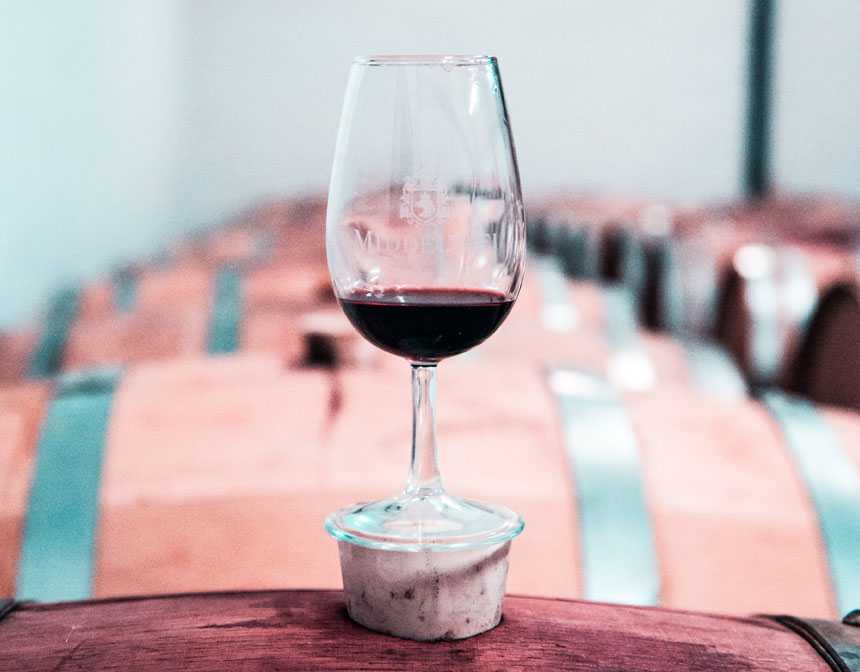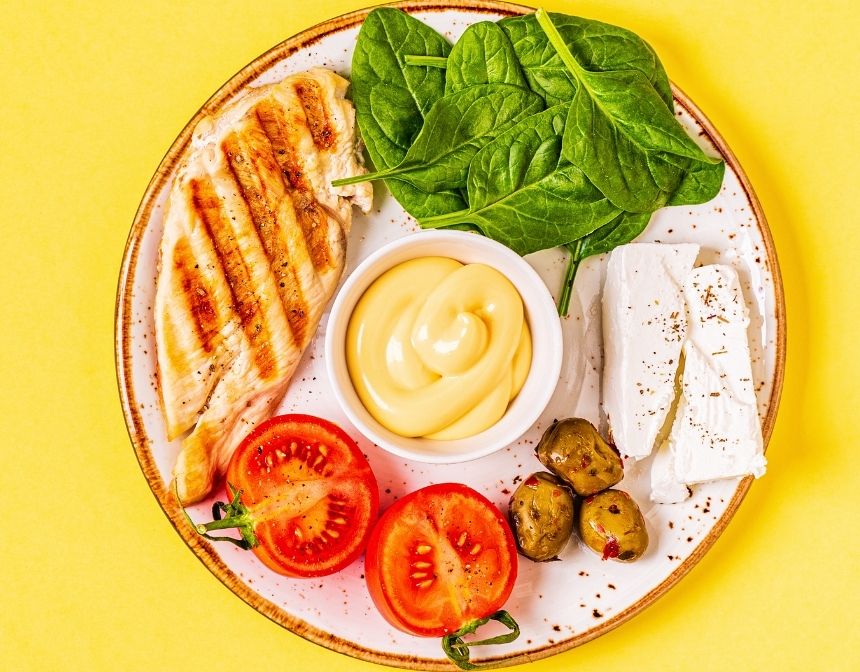What Is Strawberry Vinaigrette Made Of?
Strawberry vinaigrette is typically made with a few simple, fresh ingredients:
Strawberries: This is the star ingredient that gives the dressing its fruity flavor and lovely pink color. Fresh strawberries are preferred, but you can also use frozen strawberries if fresh ones aren't available.
Vinegar: A vinaigrette typically includes some form of vinegar. For a strawberry vinaigrette, a milder vinegar like white balsamic, champagne, or apple cider vinegar is usually used so it doesn't overpower the strawberries.
Oil: Extra virgin olive oil is most commonly used in vinaigrettes due to its rich flavor, but other oils like canola or sunflower can also be used. The oil helps emulsify the dressing and adds a velvety texture.
Sweetener: A small amount of sweetener like honey or maple syrup can be added to enhance the sweetness of the strawberries and balance out the acidity from the vinegar.
Seasonings: Seasonings like salt and black pepper are used to enhance the flavor. You may also find recipes that include other seasonings or herbs, such as Dijon mustard, garlic, or basil.
Water: Some recipes may include a bit of water to thin out the dressing.
What Is Considered A Vinaigrette?
A vinaigrette is a type of dressing or sauce used in various cuisines, particularly in salads. It's a simple emulsion made with vinegar and oil, usually in a 1:3 ratio, although this can vary depending on the desired acidity and thickness. This basic recipe can be enhanced with a wide variety of additional ingredients for different flavor profiles.
Many different types of vinegar can be used, such as red wine, white wine, balsamic, cider, and even fruity vinegars. The oil is typically a neutral-tasting oil such as olive, canola, or grapeseed, but nut and seed oils can also be used for added flavor.
Common additions to the basic vinaigrette include Dijon mustard (which helps to stabilize the emulsion), as well as herbs, spices, sweeteners, and other flavorings. The key to a vinaigrette is the balance between the acidity of the vinegar and the richness of the oil, which can be adjusted to taste.
Despite the simple composition, vinaigrettes can offer a wide range of flavors depending on the type of vinegar and oil used and any additional ingredients added. They are versatile and can be used to dress salads, marinate meats, and flavor vegetables.
What Type Of Dressing Is Vinaigrette?
A vinaigrette is a type of salad dressing, which is an emulsion of vinegar or another acid, like lemon or lime juice, and a form of fat, typically olive oil. Emulsion refers to the process of combining two liquids that usually don't mix well together, such as oil and vinegar.
Vinaigrettes can also contain other ingredients like herbs, spices, and flavorings to enhance their taste. They are generally lighter and tangier than creamy dressings like ranch or blue cheese.
The classic ratio for a vinaigrette is three parts oil to one part vinegar, but it can be adjusted according to personal preference. The combination of tangy vinegar with the smoothness of oil makes vinaigrettes a popular choice for dressing a variety of salads.
Beyond salads, vinaigrettes can also be used as a marinade for meat or vegetables, a dip for bread, or a sauce in various dishes. They are versatile and can be easily customized to fit a wide range of culinary uses.
What Is The Difference Between Dressing And Vinaigrette?
Salad dressings and vinaigrettes are both used to enhance the flavor of salads, but they do have some key differences.
A vinaigrette is a specific type of dressing. It's traditionally made of oil and vinegar in a general ratio of 3:1, along with various seasonings. Vinaigrettes are often lighter, more liquid in consistency, and are best suited for delicate leafy greens as they don't weigh them down. You'll often find that they separate into distinct layers of oil and vinegar when left to sit, requiring a quick whisk or shake before use.
On the other hand, "dressing" is a more general term that can refer to any sauce used to flavor and moisten salads. This includes vinaigrettes but also extends to creamier options like Caesar, ranch, blue cheese, or thousand island dressings. These types of dressings are usually emulsified and thicker in consistency, so they cling to heartier salad ingredients effectively.
In essence, all vinaigrettes are dressings, but not all dressings are vinaigrettes. Dressings can contain a wide range of ingredients, while vinaigrettes have a more specific composition centered around oil and vinegar.
What To Serve with Strawberry Vinaigrette?
Strawberry vinaigrette is a versatile dressing that pairs well with a variety of ingredients, adding a burst of fruity flavor to your dishes. Here are some delicious options for serving with strawberry vinaigrette:
Quinoa Salad: Prepare a quinoa salad with chopped cucumbers, cherry tomatoes, fresh basil, and diced avocado. The strawberry vinaigrette adds a unique twist to this wholesome grain salad.
Spinach and Strawberry Salad: Combine fresh baby spinach leaves with sliced strawberries, red onion, avocado, and candied pecans. Drizzle the strawberry vinaigrette over the salad for a perfect balance of sweet and savory flavors.
Fruit Pizza: Create a delightful fruit pizza with a mix of strawberries, blueberries, raspberries, and sliced kiwi or mango. The strawberry vinaigrette brings all the fruits together and enhances their natural sweetness.
Grilled Shrimp Salad: Grill some shrimp and serve them on a bed of mixed greens, avocado slices, and sliced strawberries. Drizzle the strawberry vinaigrette over the salad for a light and flavorful meal.
Strawberry Vinaigrette Pan-Seared Salmon: Drizzle strawberry vinaigrette over pan-seared salmon fillets for a delightful and light seafood dish.
Vanilla Ice Cream: For a sweet treat, serve fresh berries like strawberries, raspberries, and blueberries with a scoop of vanilla ice cream. Drizzle the strawberry vinaigrette over the berries and ice cream for a unique and indulgent dessert.
Roasted Vegetables: Toss roasted vegetables, such as asparagus, bell peppers, and zucchini, in a generous amount of strawberry vinaigrette for a unique and flavorful side dish.
Grilled Fruit Skewers with Strawberry Vinaigrette: Thread chunks of fresh pineapple, peaches, and strawberries onto skewers and grill until slightly caramelized. Drizzle with strawberry vinaigrette for a delightful dessert.
Origins of Strawberry Vinaigrette
Strawberry vinaigrette dressing is a delightful blend of sweet and tangy flavors that can liven up any salad. The infusion of ripe strawberries brings a refreshing sweetness that perfectly balances the sharp, tart character of the vinegar. This fusion of flavors makes strawberry vinaigrette dressing an exceptional choice for a wide range of salads, from simple green leafy salads to complex creations featuring cheese, nuts, and other fruits.
The origin of strawberry vinaigrette isn't well-documented, but it likely emerged as a variant of traditional vinaigrettes when cooks began to experiment with the addition of fruit for added flavor and complexity. The vinaigrette itself, a simple emulsion of oil and vinegar, is a staple of French cuisine dating back centuries. Its versatility allows it to serve as a base for countless adaptations and variations, with strawberry vinaigrette being one such delightful example.
An enticing spin on this dressing is the strawberry balsamic vinaigrette. By substituting the regular vinegar with balsamic vinegar, it introduces a rich, syrupy tang that pairs extraordinarily well with the sweetness of strawberries. Strawberry balsamic vinaigrette can take an ordinary salad to new heights, offering a gastronomic experience that is both delightful and memorable. Whether you're looking for a way to jazz up your daily greens or planning a gourmet meal, this strawberry vinaigrette dressing recipe is definitely a game-changer. With its unique blend of flavors and easy preparation, it's a brilliant addition to any cook's repertoire.








































